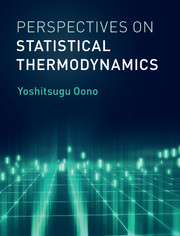Preface
Published online by Cambridge University Press: 24 November 2017
Summary
This book is for a motivated undergraduate student to learn elements of thermal physics on her own after a rudimentary introduction to the subject (at the highest, 200 level in the US). This is a book I wished I had when I was an undergraduate student, struggling to learn physics by myself (I was never taught what I am teaching now; I was a wet chemist). Thus, most intermediate formulas are explicitly given and all the problems are with detailed solutions except for extremely elementary ones (even they come with answers).
Every student graduating from physics should know at least the existence of the topics covered in this book. This book can be used as a course textbook for a ‘second introduction’ to thermal physics or as a bridge between traditional thermal physics undergraduate and graduate courses. All the key elements of thermal physics are explained without demanding any prior experience of advanced physics as a second introduction, but we go far beyond the elementary introduction.
I intended to write a thermal physics book that can connect rudimentary gas kinetics and Brownian motion to statistical thermodynamics. Traditionally, equilibrium statistical mechanics books do not tell the reader how to count atoms, even though atomism should be the key idea of the traditional exposition. I explain Einstein's Brownian motion theory before thermodynamics and statistical mechanics. The explanation of Brownian motion and Langevin equations naturally leads us to large deviation theory, one of the pillars of the modern probability theory. Thus, this book emphasizes three levels of descriptions of our world: microscopic, mesoscopic, and macroscopic. Accordingly, the law of large numbers and the large deviation principle are used as the mathematical backbone of thermal physics.
Although this book does not hesitate to point out the key mathematical ideas that physicists should know, “back of the envelope” calculation and intuitive understanding are emphasized whenever possible (e.g., dimensional analysis is stressed). The required mathematics is restricted to a minimum throughout this book. Still, some minimal prerequisites are desirable to read this book. They are linear algebra, calculus, and (classical and quantum) mechanics (and perhaps a bit of electromagnetism). There is an appendix explaining (quantum) mechanics for the reader who may be learning quantum mechanics concurrently, but it is only a brief summary and should not be regarded as a substitute of an elementary mechanics course.
- Type
- Chapter
- Information
- Perspectives on Statistical Thermodynamics , pp. xxi - xxiiPublisher: Cambridge University PressPrint publication year: 2017

